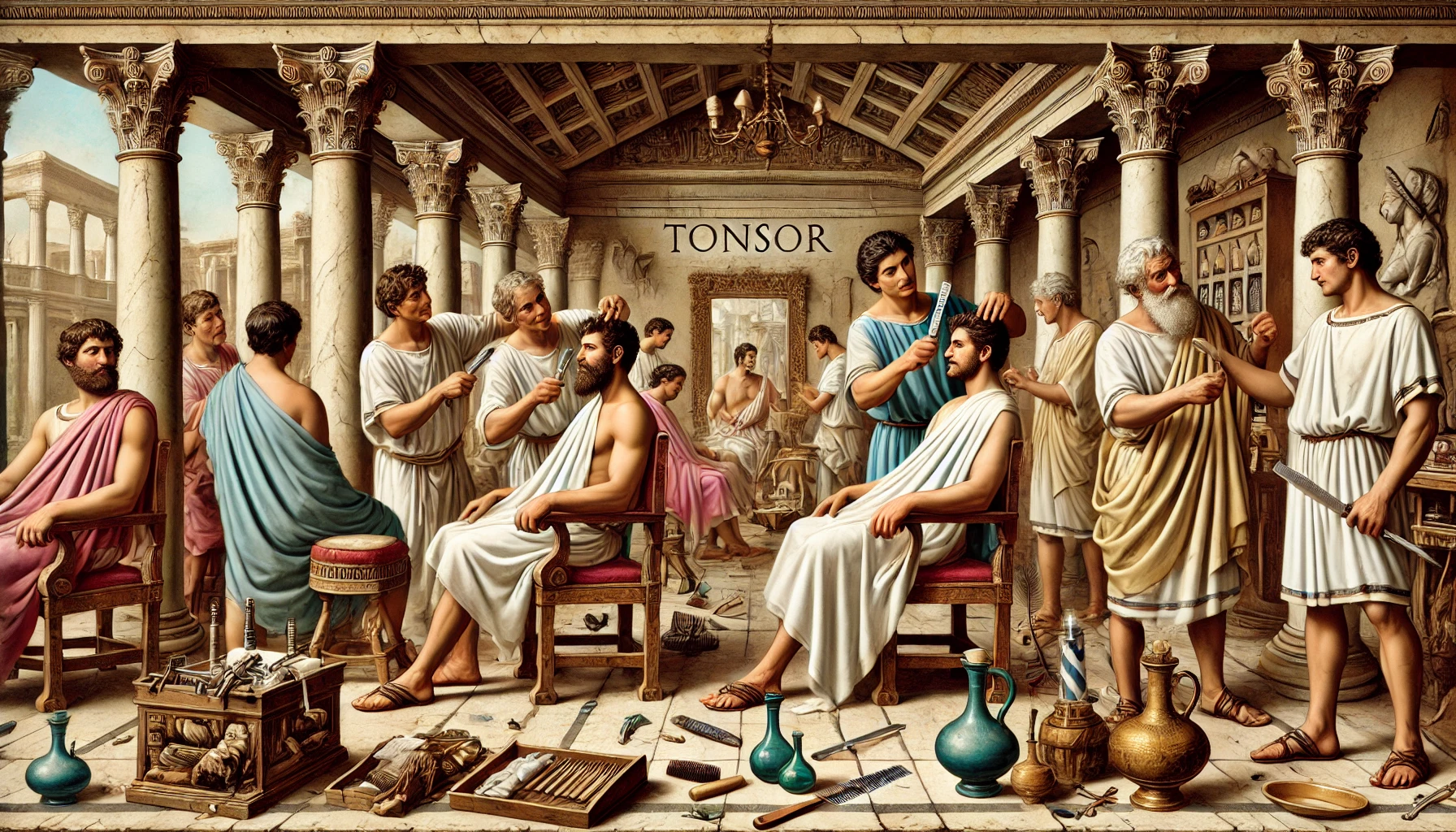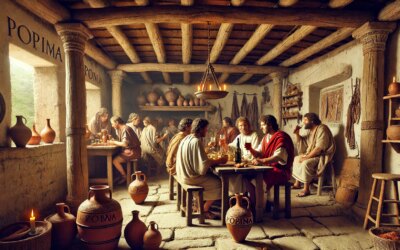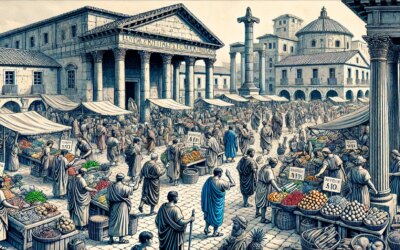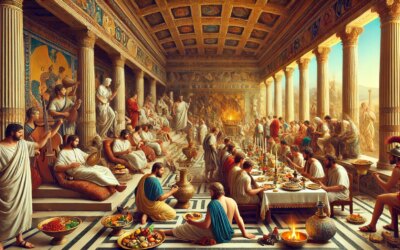The Sound of Shears and Scandal
In the heart of a bustling Roman forum, next to tabernae and temples, lies an unassuming shop. Inside, a man reclines on a wooden stool as a barber scrapes a bronze razor across his cheek. Another customer waits his turn, sipping watered wine and debating the latest senatorial scandal. This is a tonsor—a Roman barber shop in the 1st century AD—where grooming met gossip, and public appearance was as much about politics as it was about hygiene.
The Role of the Tonsor
Roman barbers, or tonsores, were vital figures in urban life. They provided shaves, haircuts, beard trims, and personal grooming services to clients of all classes. Though often modest in means, tonsores occupied a space where Roman men came to be seen, refreshed, and updated on the day’s news.
Much like today’s barbershops, the Roman tonstrina served both functional and social purposes. It was a place where citizens could exchange political views, comment on public affairs, and participate in the city’s lively rumor mill. Even literary sources, such as Horace and Martial, describe the barbershop as a space of conversation and satire.
Tools of the Trade
Roman barbers used a variety of tools, many of which have been discovered in archaeological sites and preserved in museums:
- Bronze or iron razors—curved blades for shaving the face and neck
- Scissors and shears—for trimming hair and beards
- Combs made of bone or wood—used to part and style the hair
- Oil flasks and applicators—for softening hair and adding fragrance
- Hand-held mirrors—crafted from polished metal
Shaving cream, in the form of warmed oils or fat-based emulsions, was often applied before shaving. Cold water was used for rinsing, and plucked facial hairs could be removed using tweezers or depilatory pastes.
Barbering as Social Theater
Visiting the tonsor was rarely a solitary affair. Roman men often attended the barbershop in the company of friends or clients, and the process could take time—particularly if it included shaving, nail trimming, and scalp massages. Public interaction was a core component of the tonsor’s trade.
The barbershop became a natural arena for gossip, political banter, and even philosophical discourse. Since many customers were local merchants, freedmen, and lower-level officials, the tonstrina was a hub of urban diversity. In the words of the satirist Juvenal, “It is from the barbers that news travels fastest.”
Style and Identity
In Roman culture, hair and grooming were strong indicators of status and ideology. During the Republic, clean-shaven faces became fashionable, reflecting Greek influence and a shift from the rugged beards of early Roman tradition. By the 1st century AD, elite men often kept short hair and smooth faces—a style linked to discipline and civility.
However, styles varied across time and class. Philosophers, poets, and some emperors—like Hadrian—revived beards as signs of intellectualism or old-world masculinity. The tonsor had to navigate these trends, adapting to the tastes and aspirations of his clientele.
Barbershops for All Classes
Though barbers catered to elites, they were especially popular among the urban middle and lower classes. Many shops were located near public baths or markets and charged modest fees. In some cases, patrons paid in kind—offering goods or services in exchange for grooming.
Wealthy Romans typically employed private barbers within their households, but even they might visit public shops for the sake of visibility or camaraderie. After all, to be seen in a bustling barbershop was to demonstrate one’s belonging to the civic community.
Training and Professional Status
Barbers often learned their trade through apprenticeship. Some were freedmen who had earned their liberty through service, while others operated family-run shops. Though not wealthy, a successful tonsor could earn a respectable living and even sponsor public events or religious dedications.
Inscriptions reveal barber tombstones and shop signs, suggesting a recognized professional identity. One famous epitaph reads: “I, Lucius the Tonsor, made faces shine and heard tales taller than the Palatine.”
Barbers and Health
In addition to grooming, barbers provided minor medical services. These included bloodletting, tooth extraction, and treatment of skin irritations. Such tasks blurred the line between barber and surgeon, a legacy that persisted in medieval Europe.
Though these procedures were rudimentary and sometimes dangerous, the tonsor was often the first line of physical care for Rome’s working classes—especially in a city with limited access to professional physicians.
A Trim Through Time
The Roman barbershop offers a window into the everyday life of an ancient metropolis. It was a place of routine yet ritual, where a simple shave was infused with conversation, connection, and civic participation. Whether seated for a trim or leaning in for the latest gossip, Roman citizens found in the tonsor not just a craftsman—but a keeper of stories, appearances, and social harmony.
Echoes in the Mirror
Though centuries have passed, the echoes of the Roman barbershop still resonate in modern salons and grooming parlors. In every clipped line, styled beard, and shared word, we glimpse a continuity of human expression—where the blade may cut, but the conversation binds. And in that mirror, a Roman citizen might still see himself.






